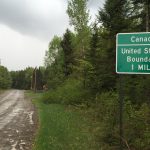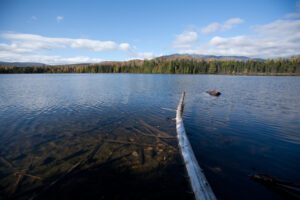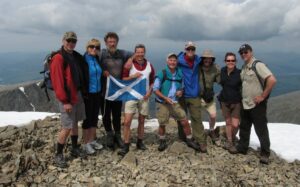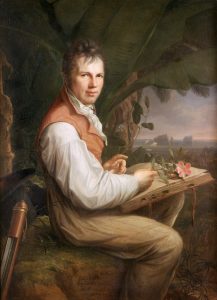
Alexander von Humboldt (1769-1859) grew up in the Prussian city of Berlin and from his early childhood was an avid observer of nature. During studies at the University of Göttingen in 1790 he traveled to England and met the President of the Royal Society, Joseph Banks, the distinguished botanist who had traveled the world with Captain James Cook. Banks gave Humboldt a tour of his large herbarium, and they spent considerable time admiring plant specimens from the South Pacific islands. The two struck up a friendship that lasted until Bank’s death in 1820, and their shared interest in botany most certainly influenced Humboldt’s ideas about plant geography. Humboldt completed his university education studying geology at the Freiburg School of Mines, and upon completion in 1792, he was appointed to a position with the Prussian Department of Mines. In a foreshadow of Humboldt’s approach to science and his influence on the methods of science, the mines of Beyreuth to which he was assigned produced more gold during the first year of his supervision than they had in the previous eight years.
Humboldt made several scientific excursions across Europe during the years that followed before joining the French naturalist Aimé Jacques Alexandre Bonpland on an expedition to Cuba, Central and South America (1799-1804).
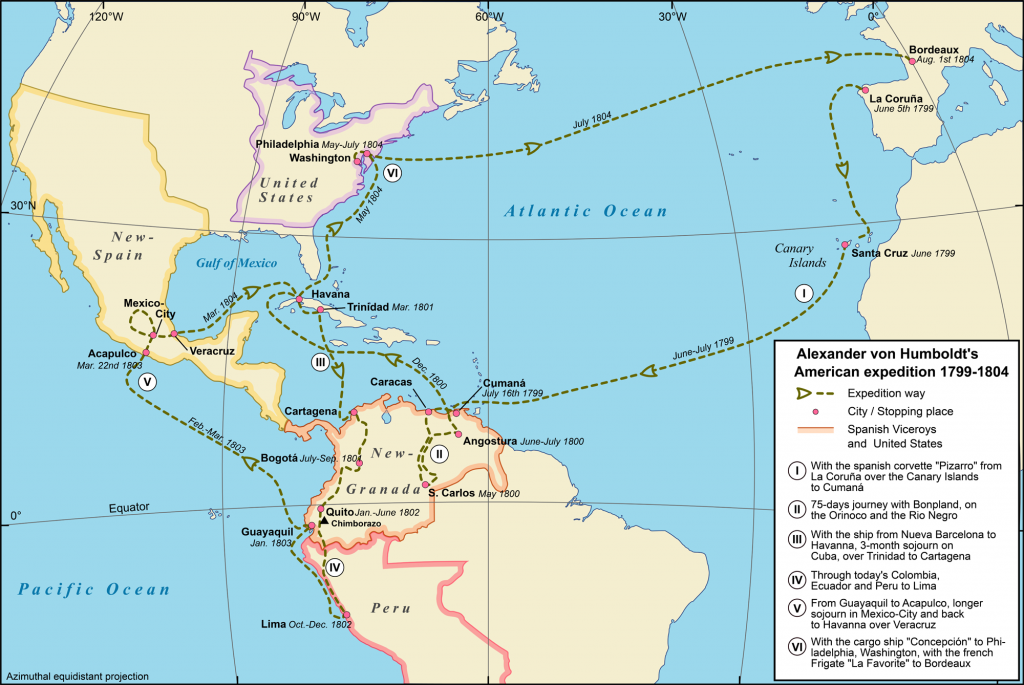
The Humboldt – Bonpland expedition ushered a new era of scientific discovery, with an emphasis on meticulous recording of observations of all aspects of the natural world. While Humboldt is now recognized as the father of biogeography, he advocated for and emphasized the unity of nature through careful observations and reflections on geology, geography, climate, botany and zoology. Humboldt explored the upper reaches of the Orinoco and Amazon Rivers, and in 1802 climbed the 20,000’ mountain in Ecuador – Chimborazo.
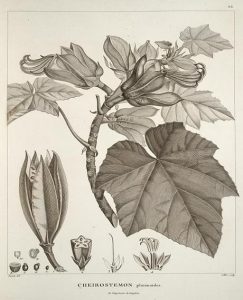
Humboldt and Bonpland published the details of their expedition in Voyage de Humboldt et Bonpland––in 23 volumes, between 1805 and 1834. In this exhaustive record of his research, Humboldt established the use of isotherms, studied the course of tropical storms and the increase in magnetic intensity from the equator toward the poles.
He investigated the effect of geographical environment on the distribution of plants, while documenting all aspects of the people and communities he visited. In the Geography of Plants (1807) Humboldt deduced that the changes in plant distribution that he observed on Chimborazo from the tropical lower slopes to the alpine zone, correlated with changes in temperature and corresponded with changes observed at sea level as one travels north or south to the poles. Though now considered overly simplistic, nevertheless, Humboldt’s seminal and meticulous observations launched two centuries of studies in botany, zoology and ecology that have provided us with a rich understanding of Earth’s biodiversity.
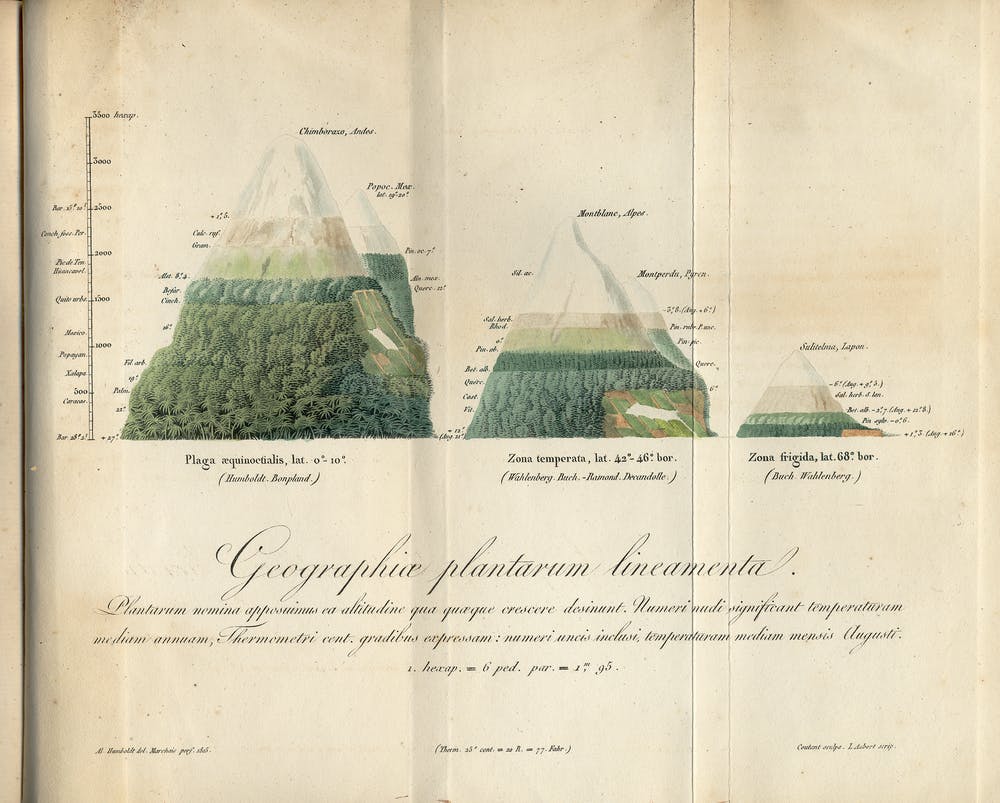
Whereas Sir Francis Bacon had noted that the west coast of Africa and the east coast of South America fit together like pieces of a puzzle, Humboldt suggested that all of the land that surrounded the Atlantic was once contiguous. Though he did not offer an explanation, Humboldt took the first step in describing plate tectonics and continental drift.
On the return voyage to Europe, Humboldt stopped in Washington, DC and held a series of meetings with Thomas Jefferson to discuss both scientific and political aspects of his 5-year exploration of the Americas. Jefferson later described Humboldt as “the most scientific man of the age.” In time, his approach to scientific exploration would be emulated worldwide and would come to be known as the Humboldt Method.
The most dangerous worldview is the worldview of those who have not viewed the world.
Alexander von Humboldt

